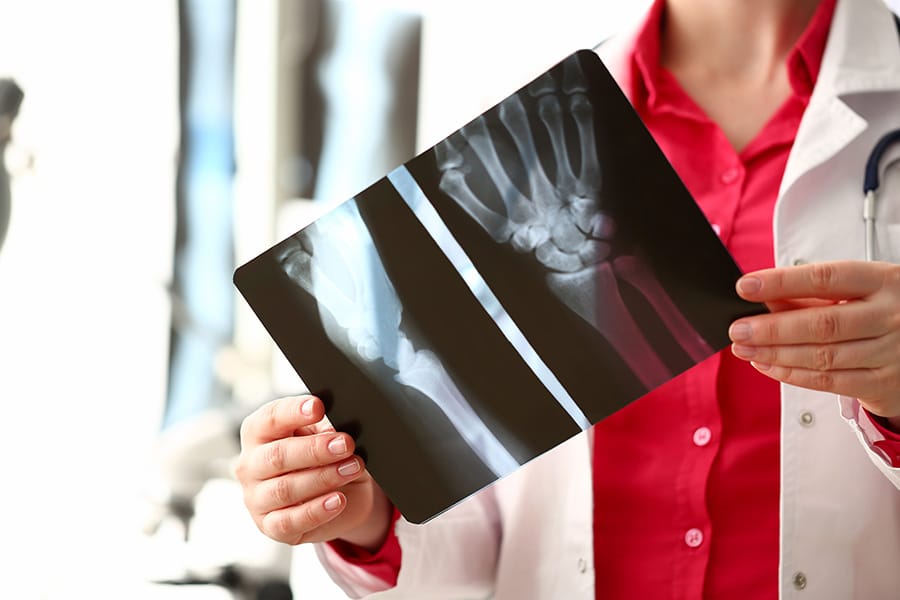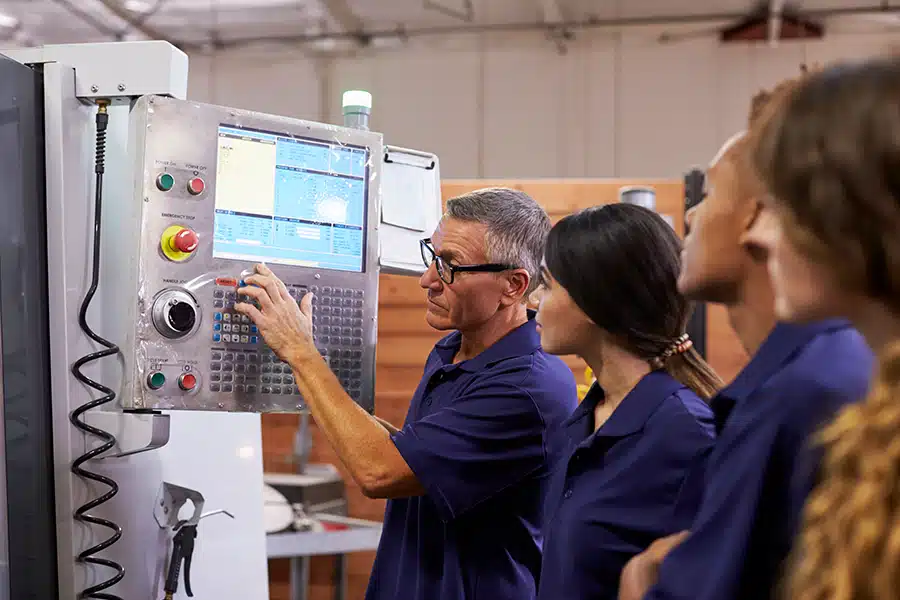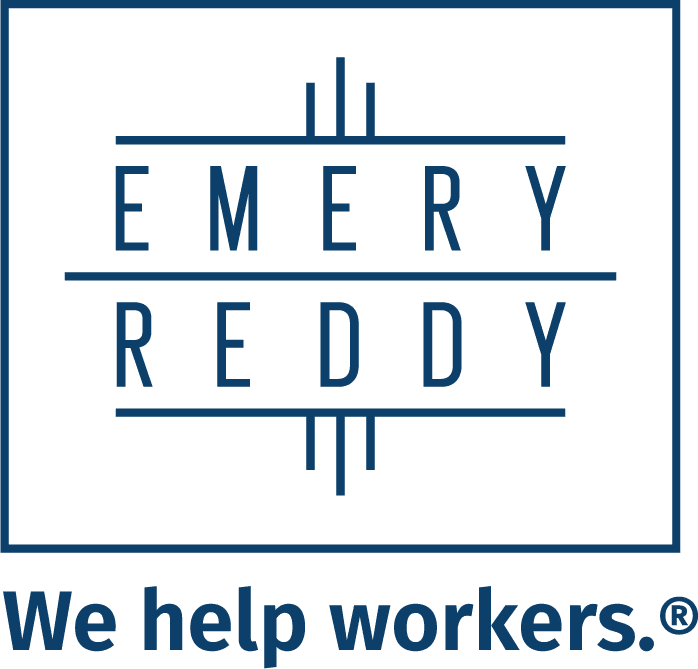If you’ve been injured at work and have an accepted Washington state L&I claim through the Washington State Department of Labor and Industries (L&I), you have the right to a variety of L&I benefits to help pay for treatment costs and replace lost wages during your recovery period. Call Emery | Reddy, PLLC today to speak with an experienced Intake Specialist and learn how we may be able to help you. No fee unless we recover for you.
What Are Washington State L&I and Workers’ Compensation Benefits?
The Washington State Department of Labor and Industries (L&I) has a range of workers’ compensation benefits at its disposal that serve as a vital safety net, ensuring that employees are supported in the event of work-related injuries or industrial disease. From medical benefits to financial assistance during periods of disability, these benefits provide essential support for workers and their families.
The first step to receiving your L&I benefits is to file your Washington state L&I claim, completing the process as follows:
How to File an L&I Claim in Washington State
In order to receive benefits from L&I, there are two very important things that you must do right away, even before a claim is filed:
- Get medical help.
- Tell your employer.
If you are injured at work, you have three options to file a Washington state L&I claim:
- File by phone at 877.561.3453.
- File online through the L&I website’s File Fast tool.
- File at your doctor’s office.
Note that if you work with a self-insured employer, you must file your claim with them.
To file an L&I claim in Washington state, you must provide the following:
- The location where the injury occurred
- Contact information for any witnesses to the injury
- Employer information
- Wage information
- If you have already seen a doctor:
- Your doctor’s first and last name
- The hospital or clinic where you received treatment
If you are eligible for time-loss benefits and no further information is needed, L&I or your self-insured employer will send the first benefit check within 7 days of receiving the report. If your doctor is one of the many healthcare providers that do not handle workers’ compensation claim cases, you can find an L&I-approved doctor on the L&I website. If your L&I claim is approved, L&I will cover the initial visit, even if it wasn’t with one of their approved doctors.
L&I or your self-insured employer must receive your Report of Accident within 1 year of your injury date to file a claim. Industrial disease claims must be received within 2 years from the date that your doctor notifies you in writing that your injury is work-related.
L&I — Workers’ Compensation Medical Benefits
In order to receive workers’ compensation medical benefits from L&I, there are two very important things that you must do right away, even before a Washington state L&I claim is filed:
- Get medical help.
- Tell your employer.
L&I, or your self-insured employer (SIE), can approve your Washington state L&I claim if your doctor certifies that you were the victim of a workplace injury, or if you have an industrial disease. If your claim is approved, you may be eligible for medical benefits.
L&I Medical Provider Network
Workers’ compensation medical benefits will be available to you for as long as your Washington State L&I claim is open, even if you have returned to work. Your first visit to a doctor for a workplace injury is covered by L&I, even if your claim is not approved. If you need medical care after the first visit, you will need to see an approved provider in the L&I network.
Protest or Appeal Denial of Medical Treatment
Sometimes, workers who feel they have fully recovered will later find that they still need additional medical care for the same ongoing injury. If your claim was closed prematurely and you need further treatment, our Seattle Workers’ Compensation and L&I Attorneys can work to reopen your claim to ensure that any additional medical bills will be covered, including L&I disability benefits.
Time-Loss Benefits
Time-loss compensation, also known as wage replacement benefits, is a partial wage replacement for a Washington state L&I claim and is paid every two weeks while you are not working due to a job injury or an industrial disease. In such cases, the Washington State Department of Labor and Industries (L&I) will reimburse you for lost time and wages — typically between 60-75% of the worker’s earnings prior to the injury or disease up to a maximum cap. The IRS considers time-loss compensation to be a disability benefit, not earned income, so income tax laws do not apply.
How Do I Qualify for Time-Loss Benefits?
- Have an open and allowed Washington State L&I claim.
- Have an Activity Prescription Form (APF) on file with L&I that has been filled out by an approved L&I provider.
- Verify that you are not currently working by filling out a Work Status Form and submitting it to L&I.
Time Loss Calculator
Invalid input
Your estimated time-loss compensation is
*
*Time loss is subject to a maximum set by L&I and adjusted annually. This calculation is as of 2022. Call Emery Reddy to discuss your specific case.
What Activities Are Prohibited While Receiving Time-Loss Benefits?
- You may not work while on time-loss unless you are approved for loss of earning power (LEP) benefits. Prohibited activities are those that are unrelated to your job that may indicate that you are physically capable of performing physical tasks.
- Do not post anything on your social media accounts that may contradict your Washington state L&I claim.
- Do not miss your medical appointments.
- Follow your doctor’s advice about activities, including sports and recreational activities.
HOW IT WORKS
Watch This Video to Learn More about Time-Loss and Disability
Loss of Earning Power (LEP) Benefits
An injured worker can return to their job under loss of earning power (LEP) benefits with a doctor’s medical clearance. If you are not deemed fit to fulfill your prior duties or responsibilities, your L&I and workers’ compensation lawyer will help arrange for light-duty or transitional work for you as you continue toward full recovery. Call Emery | Reddy, PLLC today to speak with an experienced Intake Specialist for a Free Case Review and learn more about how we may be able to help. No fee unless we recover for you.
How Do I Qualify for LEP Benefits?
Your loss of earnings must be greater than 5% of wages at the time of injury. Some examples include:
- Returning to work for less pay
- Returning to work at your regular wage but at reduced hours
Furthermore, you must meet the following criteria:
- Your doctor must certify that your loss of earning capacity is due to your work-related injury or industrial disease. If your doctor approves a written light-duty or transitional job and you choose not to accept the work, you are not entitled to LEP or wage replacement.
- You must still be working and earning income salary, wages, or commission.
What Are Examples of Light-Duty Jobs?
Light-duty or transitional work can include the following:
- Working shorter hours
- Performing some of your original duties part-time, then gradually increasing back to your full-time work responsibilities
- Performing different duties with lighter physical demands as you transition back to your regular job
- Adjusting your job or worksite to meet your physical limitations by providing tools, equipment, or the appliances that you need to perform your job as expected by your employer
Concerns about returning to work — and the possible impact on your claim — are normal, but don’t let these concerns stop you from talking to your employer. You can continue to receive treatment for your Washington state L&I claim until you’ve reached maximum medical improvement (MMI).

Permanent Partial Disability (PPD) Awards
You may be rated for a PPD award before L&I closes your claim if you have completed treatment and are able to work but have suffered a permanent loss of function, and a qualified doctor provides L&I with a PPD rating. Time-loss and medical benefits will end after receiving your disability award unless the L&I claim is reopened.
How Do I Qualify for a PPD Award?
Washington state law broadly defines permanent partial disability (PPD) as a physical or mental impairment arising from an injury that is fixed, lasting, and stable, and can’t be improved with further medical treatment, also referred to as having reached maximum medical improvement (MMI).
How Are PPD Awards Paid?
PPD awards are based on the type and level of severity of the injury. They are measured by an impairment rating calculated with the L&I Permanent Partial Disability Awards Charts. In general, the higher the rating, the bigger the payout. An experienced L&I and workers’ compensation lawyer and the right doctor are usually the winning combination to unlocking the maximum amount of L&I benefits to which you are entitled.
- Permanent partial disability in Washington state is calculated when L&I closes your claim.
- Your impairment is rated by a doctor or your attending physician during a PPD rating exam, followed by an approved L&I doctor during an Independent Medical Exam (IME) once you have reached maximum medical improvement (MMI).
- You will receive your award after you get medical care for your injury, become employable, get a rating exam, and have your claim closed by L&I.
- If the award amount is less than three times the state’s average monthly wage at the date of injury, L&I or the self-insured-employer (SIE) sends a check for that amount.
- If the award exceeds more than three times the state’s average monthly wage at the date of injury, L&I or the SIE makes a down payment from the PPD Award Down Payment Amounts chart. They then pay the balance of the award once a month in installments equal to the worker’s monthly time-loss compensation (at the time of closure).
Permanent Partial Disability Settlement Calculator
The permanent partial disability settlement calculator is the PPD Schedule 2024 and is calculated as part of the claim closing process. Based on the location of the injury on your body, the severity, and when the injury happened, L&I will calculate your PPD award when it’s time to close your claim.
Your injury is rated as a percentage in its category and given a value of 1 – 9. The higher the number, the more significant your injury is. Your PPD award is calculated from those numbers before your case is closed.
Your final award amount is determined by converting the rating received from your Independent Medical Exam (IME) to settlement dollars. Use the PPD Schedule 2024 from the Washington State Department of Labor & Industries to see the dollar figures.
L&I PPD Awards Charts begin on July 1st and end on June 30th of every year. To find your chart click on the correct date range for your date of injury.
HOW IT WORKS
Learn More about Permanent Partial Disability (PPD) Awards
L&I Disability Pensions
Washington State Department of Labor and Industries (L&I) disability pension benefits are awarded to injured workers who will never be able to return to gainful employment due to a severe or life-threatening injury. An L&I disability pension is not a retirement pension, nor does it come from any system such as social security, an insurance contract, or a private pension plan. It also does not come from your employer; it comes from L&I. Any Washington state L&I claim can end with an L&I disability pension if it meets certain criteria. Call Emery | Reddy for a Free Case Review to speak with an experienced Intake Specialist and to learn how we may be able to help. No fee unless we recover for you.
How Do I Qualify for a Washington State L&I Disability Pension?
You may receive a monthly L&I disability pension if you are certified as permanently and totally disabled, AND:
- The medical and vocational evidence finds that your injury prevents you from becoming gainfully employed, OR
- You have lost, or lose the use of, both legs, both arms, an arm and a leg, or your vision.
How Are L&I Disability Pensions Paid?
An L&I disability pension is a payment received once monthly for the rest of your life. The monthly dollar amount is roughly equal to your monthly time-loss payment.
If you begin receiving Social Security disability or retirement benefits, you should immediately notify the L&I Pension Benefits Section in order to avoid overpayment. Your future L&I disability pension benefits may be reduced depending on the effective date of your pension and your highest year’s wages. Even if you are drawing benefits from both agencies, the total amount you receive will not be less than you would be entitled to receive from L&I alone.
L&I disability pensions are hotly contested, and less than 2% of all L&I claims end up settled in this manner. Because these claims are expensive to fund, it’s sometimes cheaper for the State or self-insured employer (SIE) to fight a claim rather than just pay it. In other words, your claim is valuable, and as such, you should expect to fight hard for it.
HOW IT WORKS
Learn More About L&I Disability Pensions
Claim Resolution Settlement Agreement (CRSA)
A claim resolution settlement agreement (CRSA) is an L&I settlement option where all parties agree to close an injury claim for a specified amount. When agreeing to this settlement type, the injured worker exchanges all future L&I benefits, except medical, for the payment.
Self-insured employers (SIEs) are more likely to use CRSAs. The most common reason for this is to save money and will, unfortunately, make it more difficult for you to get your compensation. The SIE will do everything in their power to deny it. However, they still need to follow the established rules created by the Washington State Department of Labor and Industries (L&I) for self-insured companies. If you disagree with their decision, you have the right to protest or appeal. Contact an experienced L&I and workers’ compensation lawyer for help as soon as possible to help with the process.
How Do I Qualify for a CRSA?
You must meet the following criteria to receive a CRSA from the Washington State Department of Labor and Industries:
- You must be over the age of 50.
- Your claim must be allowed and at least 180 days old.
How Are Claim Resolution Settlement Agreements Paid?
CRSAs are awarded in one lump sum at L&I claim closure.

Vocational Rehabilitation
Vocational rehabilitation is available to injured workers who are unable to return to their existing profession. The following services are included in workers’ compensation vocational rehabilitation training:
- Vocational recovery
- Ability-to-Work Assessment (AWA)
- Plan development or work relating to prior job experience, education, or other transferable skills (must be completed and submitted to the Washington State Department of Labor and Industries (L&I) within 90 days of the day the worker commences vocational plan development)
- Plan implementation (vocational training)
- Counseling
- Job placement
L&I cannot close your Washington state L&I claim until either you return to work or your doctor has deemed that you are able to return to work. See RCW 51.32.095.
HOW IT WORKS
Learn More about Vocational Rehabilitation
How Do I Qualify for Vocational Rehabilitation?
L&I determines if you qualify for workers compensation vocational rehabilitation during the Ability-to-Work Assessment (AWA). The final report to L&I includes the following:
- Your age, education, and work experience
- Your transferable skills
- Preexisting physical and mental conditions and their effect on your employability
- Physical and mental conditions caused by your injury or industrial disease and their effect on your employability
- Your wage at the time of injury
- Your work pattern
- Significant barriers to your employment
- Surveys of potential jobs (referred to as labor market surveys)
- Complete work history, explaining any gaps in employment and any licenses or training that you may have had in addition to your formal education
It is strongly advised that you talk to an L&I attorney before you start working with a Vocational Rehabilitation Counselor (VRC). A VRC works for the Washington State Department of Labor and Industries (L&I) or the self-insured employer (SIE) and is responsible for making recommendations about your future in the workplace. VRCs and L&I Claims Managers are skilled at finding ways to argue that you can return to the workforce in some other job — even if it’s a job you’ve never performed.
HOW IT WORKS
Learn How Employment Law and L&I Claims Work Together
Your Washington State L&I Claim Is Worth More If You Also Have an Employment Claim
A significant number of Washington state L&I claims often involve additional legal claims such as employment or third-party claims. Many people file their claims without seeking representation from an experienced Seattle workers’ compensation and L&I attorney and thus never discover that, in addition to their Washington state L&I claim, they may be missing out on the ability to file an employment claim or a third-party claim. Pursuing additional legal action with the help of an experienced Seattle workers’ compensation and L&I attorney has the potential to significantly increase a claim’s overall compensation. At Emery | Reddy, our experienced Attorneys practice both Employment and Labor Law as well as Workers’ Compensation Law, which means we will investigate all aspects of your claim to make sure you aren’t missing out on any potential benefits.
Many injured workers find that their employer has taken, or plans to take, adverse action against them because they filed an L&I claim or they are out of work. You can file a lawsuit against your employer for several reasons, including retaliation, wrongful termination, discrimination, or unpaid wages. An L&I attorney who is experienced in both L&I — Workers’ Compensation Law and Employment and Labor Law can help you with your Washington state L&I claim while simultaneously filing a federal or state law claim for the violation of workers’ rights by your employer.
A third-party claim is one in which someone other than your employer or co-worker is responsible for your injury. If you have been injured on the job due to someone else’s actions or negligence, you may be entitled to additional compensation through a third-party claim, which combines your Washington state L&I claim with a personal injury claim using the same facts.
Unlike workers’ compensation payments, there is no limit to the amount of compensation an injured worker may seek in third-party damages. Third-party claims are private matters and are typically litigated directly with the Washington State Superior Court.
How Do I Know If I Have a Strong Washington State L&I Claim?
If you have a Washington state L&I claim or wonder if you should contact an experienced Seattle L&I worker’s compensation attorney, ask yourself the following:
- Have I been denied the medical benefits to which I am legally entitled?
- Has L&I asked me to undergo an Independent Medical Exam (IME)?
- Do I have questions about the Washington state L&I claim process?
If any of the above apply to you, Emery | Reddy may be able to help.
Navigating a Washington state L&I claim can be difficult and very time-consuming, especially when you’re ill or injured. You want to focus on healing and make sure your bills are paid, but if you don’t file things properly or on time, your health, home, and job could be in jeopardy. Many individuals miss out on much-needed L&I benefits because they don’t understand what to do or how to get the most compensation for their injuries. If you are experiencing any challenges in your case, a Seattle workers’ compensation and L&I attorney can assist you. By contacting Emery | Reddy as soon as possible after you’ve been injured, we can help you avoid the common pitfalls of filing and navigating an L&I claim. Our Seattle Workers’ Compensation and L&I Attorneys are here for you every step of the way.
Emery | Reddy Can Help You with Your Washington State L&I Claim
Emery | Reddy is the only law firm in Washington state that is equipped to provide comprehensive representation on your case from every angle. Our Seattle Workers’ Compensation and L&I Attorneys thoroughly assess every case to determine if our clients have additional claims, and at times this can extend far beyond the underlying workers’ compensation claim.
If you have been injured in the workplace, call Emery | Reddy today for a Free Case Review with an experienced Intake Specialist to learn more about how we may be able help. No fee unless we recover for you.
Are you Injured?
Contact Us Today
Contact Us for a FREE Case Review.
No Fee Unless We Recover for You.
Want More Information?
To determine the value of your L&I (workers’ compensation) settlement you first need to understand the different types of L&I settlements offered in Washington state.
The L&I workers’ compensation process is anything but straightforward. Find out the answers to your L&I workers’ comp questions today.
Explore Washington state L&I benefits. Emery | Reddy's award-winning Workers' Compensation and L&I Attorneys can help you with your claim.
WE FIGHT FOR YOU
Meet the Team
The Seattle Workers’ Compensation and L&I Attorneys at Emery | Reddy, PLLC are passionate about helping workers with L&I claims and Employment and Labor Law issues. We help workers.® It’s our motto and what drives us every day.
We know how L&I and big companies think, and we understand the tactics they use. Our Seattle Workers’ Compensation and L&I Attorneys use that knowledge coupled with over eight decades of experience to help our clients get access to the L&I benefits to which they are legally entitled and hold employers accountable when they break the law.
If you’re struggling with a Washington state L&I claim, or legal issue at work, call us for a Free Case Review with an experienced Intake Specialist to learn more about how Emery | Reddy may be able to help. No fee unless we recover for you.
“Tim and the Emery | Reddy team has helped me with an employment matter…and I must say, I can't say enough how grateful and happy I am with the service I have received. They were detail-oriented, attentive, on time with communication, and very knowledgeable. Highly, highly recommend!”
— Emily H.
Receive a
FREE Case Review







